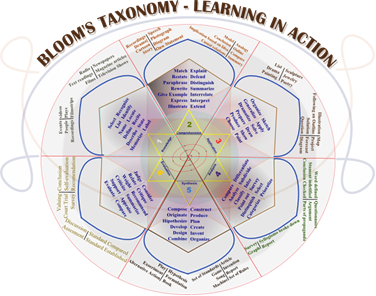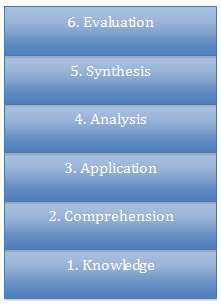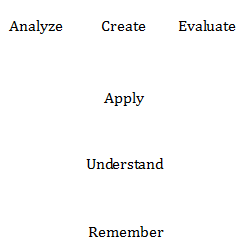 What the heck is a Business Architect?
What the heck is a Business Architect?
I have had the title Business Architect for almost a year now — I’m loving it. With about thirty years’ working experience in software and the last ten years in the role of business analyst, the next step for me was business architecture, but if you asked me a year ago what that meant, I wouldn’t have been able to give you a succinct answer, or tell you the elements of the discipline. It was something about the connotations of the word “architecture” that attracted me. The notion of integrating all the functionality together, having hierarchies of taxonomies in your head, ooh, ooh! But thinking and doing take more than a little effort to link. Sometimes stubborn people like me need a kick in the rear from the universe to get moving. So while I didn’t like getting laid off last year, because as much as I was relieved to be out of there, my pride was hurt, it was time to go and it forced me to recalibrate myself professionally and make the leap.
The trouble was, there was so much conflicting information about the role of the Business Architect. There’s lots of conflicting opinions on the differences in focus between an Enterprise Architect, a Business Architect, an Information Architect and a Process Architect.
Being intuitive and somewhat reckless, when the interview question came up from the Enterprise Architects about what technologies I would recommend, I heard these words coming out of my mouth, “Gentlemen, you shouldn’t be hiring a business architect to advise you on technologies. I may have my opinions, but there are far better qualified people out there for that. I would be bringing you information about business needs and business processes, not on technologies or solutions.” This was a phone screening. There was dead silence on their end of the line. Darn it, Cecilie, you’ve stuck your foot in your mouth again, I thought to myself. Then, I hear, “Okay! Would you tell us about a situation in which…” Whew, they were still talking to me.
I knew I could do the tasks identified in the job description, but I knew I had to get ahead of the professional development curve if I was going to succeed in this role in the long term. After a few months on the job, there was an opportunity to take the equivalent of Business Architecture 101 at a conference, so I signed up for two 1-day seminars. One of the seminars was just okay. The second one was mind blowing — one of those experiences where every synapse in your brain is pulsating and your neural matter hurts for days afterwards because new neural pathways are forming, and old, deep patterns that have never been challenged before have been cauterized out. I walked around for a week after that seminar like a grinning fool.
I needed definitions and I got ‘em. After keeping these definitions in the back of my mind for the past six months, I’m ready to share — they are valid and I hope you find them useful for your career development and for your endeavors in the Enterprise Analysis knowledge area of the Business Analysis Body of Knowledge.
What is Business Architecture?
First, a business architecture is not a business function/process model. Most business process models show an inventory of processes, but not an integrated model of the information used by those processes. Most business function/process models do not show the customer/consumer/end user or how that customer perceives the touch-points between the business processes and functions.
Business Architecture occurs when you integrate two or three or more different core cross-functional business processes in an engineering type of model, and as a result, make things more clean and efficient. This model is the beginning of an enterprise business architecture. The definition I use is a model of an enterprise (single company or industry) that shows the integration points of all the information that enables the enterprise to function. The model shows information sources, destinations and transformations.
Furthermore, for a single company, a business architecture is just one element of an integrated enterprise architecture. The integrated enterprise architecture includes business, technology, security and organizational architectural components to create a complete model. In addition to all the modeling techniques I have used as a business analyst, I have added capabilities, value streams and value chains to my bag of modeling techniques.
No discipline is without its controversies and the usefulness of basing an architecture on capabilities is one of those controversies. Here’s a definition of capability: the ability of an organization to use its assets to accomplish an activity that delivers business value or competitive value. I have memorized that phrase and can spout in out in my sleep. I can’t build a model of a capability that would stand up to a spring rain. Still, I see long threads on the business architecture discussion sites focused on how best to model “our unique ability to do ”. When the focus shifts solely to a linear process without a view of the integration points, I get worried.
A value stream is an end-to-end collection of activities that creates a result for a customer. The value stream has a clear goal: to satisfy or to delight the customer. “Delighting the customer” is a well-known phrase that comes to us from the Six Sigma and Lean Manufacturing disciplines.
Some examples of strategic visioning value streams are “insight to strategy,” “vision to eBusiness enterprise,” “concept to development,” “initiative to results,” and “relationship to partnership.” At Railinc, because the business architecture function is new, one of the first things my team had to do was define an “initiative to results” value stream and integrate it with the product management team activities.
You may be familiar with some customer-centric value streams such as “prospect to customer,” “lead to cash,” manufacturing to distribution,” and “request to service.” Business analysts are also typically deeply involved with business-enabling value streams such as, “forecast to plan,” “requisition to payables,” “resource availability to consumption,” “acquisition to obsolescence,” and “financial close to reporting.” People caring is another category of value streams, “recruitment to retirement” (less politically correctly known as “hire to fire”) and “awareness to prevention.”
I’ll go into value chains in a future article, but for now I just want to say that value chains are part of what a business architect builds. A value chain is a sequence of activities followed by a company in a specific industry. The chain of activities gives the product more added value than the sum of the independent activity’s value. As a simple example, take a master chocolatier as a profession. Cocoa mass, sugar, cocoa butter and dark chocolate nibs are low-cost ingredients by themselves. In the hands of a master chocolatier, the result can earn you forgiveness for leaving dirty socks on the living room floor, show appreciation to that analyst who went the extra mile for your study, or, eaten in private, could get you lucky on a date. The making of a chocolate confection may have a low cost, but the activity adds much of the value to the end product since the ingredients are significantly less valuable than a box of Recchiuti Confections.
So, what do you do with a value chain? Once you have the value chain, in order to understand the behavior of costs for the product you can disaggregate a company (don’t be distracted by the divisions) into its strategically relevant activities. And you can examine the existing and potential sources of differentiation between your company and your competitors. Does your competitor have the ability to deliver a service in the same end-to-end capacity as your company can? Does that make you more interesting to potential customers? Understanding the value chains enables a company to gain a competitive advantage by performing these strategic activities more cheaply or better than its competitors.
What is the goal of Business Architecture?
In my opinion, the goal of a business architecture is to enable a company to focus its services on its customers. If you don’t know how the information in your company is integrated to enable delivery of services and customer satisfaction as well as being able to bill and collect for those services, then your company is in trouble.
Case in point, what happens when you have multiple customer master databases? It is easy for this to happen. In my previous company, we grew by acquisition. With each new acquisition came at least three customer master files, one from the sales group, one from marketing and one from customer service. In my current company, we are in the process of integrating the customer master files associated with siloed products. One of the driving issues is data quality; when you have multiple sources of the same data, but no process for “single source of truth,” it can be impossible to know what is the most current data set for a customer. To achieve the goal of a single customer master file a company has to have an integrated model of customer touch-points. I don’t know about you, but I hate getting “exceptional offer for new customer” announcements from a service provider that I already have a contract with, especially when I see what good deal I would get if I weren’t already a customer. Makes me wonder if a competitor might match that new customer offer.
Rethinking “The Customer is #1” idea
A short tangent, indulge me. I’ve never liked the idea of the Customer being #1. In my mind, the employees should be #1 because if the employees are treated well they will perform well and treat the customer well and make the customer feel like they are #1.
In a previous company that I’ve worked for, if a customer became difficult to work with, one question that was always on the table was, are they worth doing business with? We could quantify that answer in terms of revenue versus lost productivity dealing with them and low employee job satisfaction. There’s a ceramic urn on top of the refrigerator in the employee break room at that company labeled “ashes of former customers.” I can’t tell you how much employee loyalty that urn evokes; I can tell you that in that urn are the names of companies we stopped doing business with because management decided it was bad business.
My employer, Railinc, is a subsidiary company of the American Association of Railroads. Having never worked for a subsidiary company before, I was surprised when I realized that one piece of advice that has been in my toolkit is no longer applicable — Railinc cannot fire any of its customers. We can’t single out a particular railroad and say, “We won’t do business with you.” A new twist in the life of an information worker.
Does making the employee “#1” conflict with the goal of a customer-centric business architecture? Not at all. It just means that a company needs to examine its business goals and determine the different aspects of “the customer,” i.e., revenue source and cost-center if it wants to broaden its definition of “customer.” Customers aren’t just revenue sources; they are also sources for cost, as in customer-retention. Employee-retention is also a quantifiable asset. Revamping the definition of customer is one example of how thinking at the enterprise level changes the scope of a business analyst to business architect.
What does a Business Architect do?
Like the job description for a business analyst, the answer to that question seems to be dependent on the hiring manager. There’s lots of confusion between the role of the enterprise IT architect and the business architect. I can only tell you what I am and am not doing.
Currently my focus is on core elements of the industry, specifically railcar health and railcar utilization. My days are spent as follows:
- Formulating frameworks and building models — by the bucket load
- Writing concept documents
- Critiquing project proposals
- Preparing for and conducting knowledge elicitation meetings
- Asking a lot of questions
- Collaborating, facilitating, more collaborating
- Identifying “services” in product offering visions
- Tending an organic (constantly changing) ten-year roadmap
I do not research or recommend technologies. That’s doesn’t mean I can be ignorant of past or current technologies. In fact, being older and having been around when some of the legacy systems were built and understanding how difficult it is to migrate off those platforms has been beneficial. I leave the “how” of the solution to the enterprise architects. They come to the business architecture team for the “what do they need to do and why do they need to do it.”
In my current position, my scope of work isn’t a single company. Railinc provides information services to the railroad industry. The business architecture model that my team is building focuses not on a single enterprise but on the entire railroad industry.
What I don’t do is spend any time with UML, write formal requirements and work directly with the product developers. That experience prepared me for how I spend time now — working with people at the railroads, with Railinc business analysts, product managers, program managers, Railinc enterprise and data architects, and external industry subject-matter experts.
I help articulate our products, current and future, in terms of services and value streams. In particular, I analyze railcar health and utilization information and integration points in terms of relationships to all external entities, other enterprise value streams and the events that trigger instantiation. I look at railcar health and utilization information from the perspective of what my company must produce to satisfy its industry partners, compete in a market and deal with its information suppliers.
Summary
If you can’t help but perceive the world around you in terms of business information needs and process and connections; if you can hold multiple points of view simultaneously; if the meta-modeling is part of your consciousness and you’ve had a blast being a business analyst and are looking for something more, then I strongly encourage you to start aiming your career at business architecture.
Recommended Reading
Google these:
- The Outside-In Approach to Customer Service, Sarah Jane Gilbert
- “You Can’t Cost-Justify Architecture,” John Zachman
- “Converging Business Architecture Approaches,” article on BPMInstitute.org
This book was published this year: Enterprise Business Architecture, by Ralph Whittle , Conrad B. Myrick
Don’t forget to leave your comments below.
Cecilie Hoffman’s professional passion is to educate technical and business teams about the roles of the business analyst and business architect, and to empower business analysts with tools, methods, strategies and confidence. A motorcycle enthusiast, she’s riding out the downturn in the economy by living a bicoastal life, living in California and working as a business architect at Railinc in North Carolina. Her friends have disqualified her from the “how far do you commute to work” contest on the grounds that she’s nuts.


 A senior manager posed this question at the end of an all-hands meeting: “How do we know when business analysis is being done well?”
A senior manager posed this question at the end of an all-hands meeting: “How do we know when business analysis is being done well?”
 What the heck is a Business Architect?
What the heck is a Business Architect? 
 Following through from the previous articles on changing jobs (see
Following through from the previous articles on changing jobs (see 

